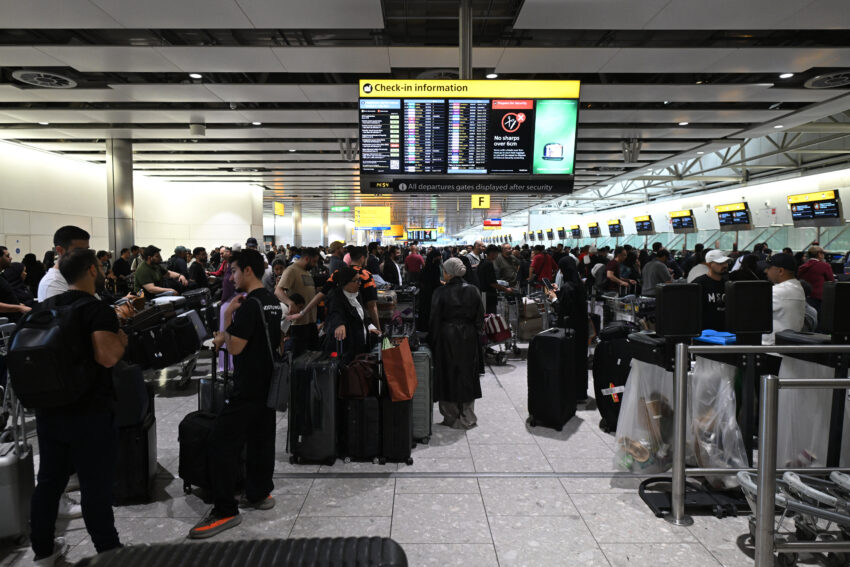
uk arrests man in airport ransomware attack A man has been arrested in connection with a ransomware attack that disrupted air travel across Europe, affecting major airports and causing significant delays.
uk arrests man in airport ransomware attack
Overview of the Incident
Last week, a ransomware attack targeted the Multi-User System Environment (MUSE), a software platform developed by Collins Aerospace. This system is crucial for airport operations, allowing multiple airlines to share check-in facilities. The attack had a widespread impact, affecting several airports across Europe, including London’s Heathrow and Berlin’s Brandenburg. As a result, many airlines were forced to revert to manual check-in processes, leading to long queues and frustrated travelers.
Details of the Arrest
The UK’s National Crime Agency (NCA) announced the arrest of a man in his forties in West Sussex. While specific details about the individual have not been disclosed, the NCA confirmed that he has been released on conditional bail as the investigation continues. The agency has not provided extensive information about the circumstances surrounding the arrest, which has led to speculation regarding the nature of the attack and the individual’s potential involvement.
Impact on Air Travel
The ransomware attack caused significant disruptions in air travel, with many airlines struggling to manage passenger check-ins. Larger airlines, such as British Airways, were able to switch to backup systems, mitigating some of the impact. However, smaller airlines faced considerable challenges, resorting to manual check-in processes that have become increasingly rare in the digital age. This led to longer wait times and a chaotic atmosphere at various airports, as travelers dealt with the unexpected delays.
Technical Aspects of the Attack
Cybersecurity experts have been analyzing the technical details of the attack, although information remains limited. Kevin Beaumont, a cybersecurity expert, suggested on Mastodon that the ransomware tool used in the attack was a simple variant known as Hardbit. However, other reports from BleepingComputer indicate that a different variant called Loki may have been employed. Both of these tools fall under the category of Ransomware-as-a-Service (RaaS), which are typically used for smaller-scale attacks rather than large-scale disruptions affecting entire continents.
Understanding Ransomware-as-a-Service
Ransomware-as-a-Service has become a prevalent model in the cybercrime landscape, allowing even less technically skilled individuals to launch attacks. These services often provide user-friendly interfaces and support, making it easier for would-be attackers to deploy ransomware without extensive technical knowledge. The accessibility of these tools has led to an increase in cyberattacks, as they lower the barrier to entry for cybercriminals.
Characteristics of Ransomware Attacks
Ransomware attacks typically involve the encryption of files on a victim’s system, rendering them inaccessible until a ransom is paid. Attackers often demand payment in cryptocurrencies, making it difficult for law enforcement to trace the funds. The impact of such attacks can be devastating, not only causing operational disruptions but also leading to significant financial losses and reputational damage for affected organizations.
Broader Implications of the Attack
This ransomware attack highlights the vulnerabilities within critical infrastructure, particularly in sectors like air travel where operational continuity is essential. The reliance on software systems like MUSE underscores the importance of cybersecurity measures in protecting these systems from malicious actors. The incident serves as a wake-up call for airports and airlines to reassess their cybersecurity protocols and invest in more robust defenses against potential threats.
Stakeholder Reactions
The response from stakeholders in the aviation industry has been one of concern and urgency. Airlines, airport operators, and regulatory bodies are likely to engage in discussions about enhancing cybersecurity measures to prevent similar incidents in the future. The NCA’s swift action in arresting a suspect may also encourage other law enforcement agencies to take a more proactive approach in addressing cybercrime.
Potential Policy Changes
In light of this incident, there may be calls for policy changes aimed at strengthening cybersecurity in the aviation sector. Regulatory bodies might consider implementing stricter guidelines for software providers and airlines to ensure that adequate security measures are in place. This could include regular security audits, mandatory reporting of cyber incidents, and enhanced collaboration between public and private sectors to share threat intelligence.
Conclusion
The recent ransomware attack that disrupted air travel across Europe serves as a stark reminder of the vulnerabilities inherent in modern technology systems. The arrest of a suspect by the NCA marks a significant step in addressing the issue, but it also raises important questions about the effectiveness of current cybersecurity measures in protecting critical infrastructure. As the investigation continues, stakeholders across the aviation industry will need to work collaboratively to enhance their defenses and mitigate the risks posed by cyber threats.
Source: Original report
Was this helpful?
Last Modified: September 24, 2025 at 10:39 pm
1 views















